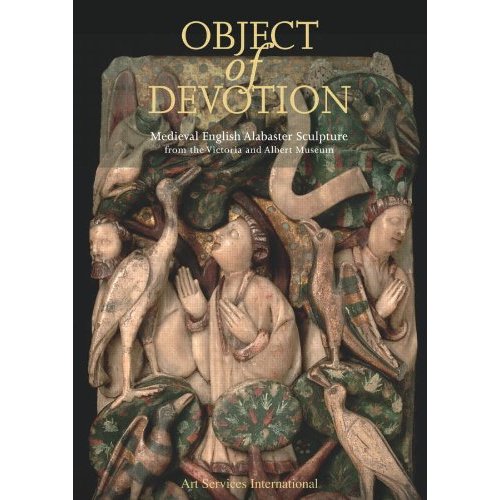Medieval English Alabaster Sculpture from the Victoria and Albert Museum
Visitors have until February 12 to view an extraordinary exhibit at the Princeton University Art Museum. From around 1350 to 1530 workshops in England produced a vast amount of sculpture in alabaster for both domestic sale and for export all over Europe. It is a remarkable legacy of pre-Reformation English art that has survived the mass destruction of the Catholic images which commenced with the dissolution of the monasteries (and shrines ) in the 1530’s. The pieces in the exhibit are carved stone panels of small to medium size. Some are painted; most have lost any original coloration they once may have had. The pieces range from large sets of images suitable for the altar of a church or chapel to small objects of private household devotion.
It is an extraordinary opportunity to observe this kind of sculpture. For in no way can a photographic image do them justice. The white,soft, semi translucent alabaster – painted or not – positively glows under the astutely disposed and focused lighting of this exhibit. The fine details of the carving and painting are revealed. What would be the appearance of these objects in the “living” light of candles?
The art of the English “alabastermen” may seem strange to us. It is generally expressionistic and remote from the spirit of naturalist observation as found either in the contemporary Renaissance or even in the earlier High Gothic! For example, the risen Christ emerges from the tomb in a veritable explosion with a dramatic outstretched arm and a foot set on a fallen guard. Complex narratives or theological programs are compressed within the boundaries of a single small panel. Scholars at times detect the influence of contemporary passion plays. Certain sculptures, however, show that notions of form derived from Flanders or even the Italian Renaissance were already making their presence felt before production ceased.
The English alabaster workshops did make sophisticated objects for wealthy patrons or for churches. Yet much of their vast output was the production of standardized images for much more modest purchasers. As a founder of the study of these images pointed out, the English alabaster sculptures represent an authentic, popular religious art. In a number of respects this art is the equivalent of that of the icon-painters of the East. If we view it as such, its achievements compare very favorably with the products of that tradition. Moreover, these surviving fragments of a great tradition also give us an idea of the scale of the artistic heritage destroyed in England between 1534 and 1660
There is a fine catalogue obtainable from Amazon(see above). The exhibit itself provides ample commentary – different from that of the catalogue and here and there also more noticeably PC.

Related Articles
No user responded in this post